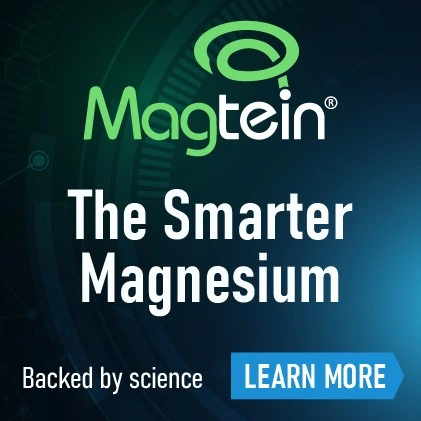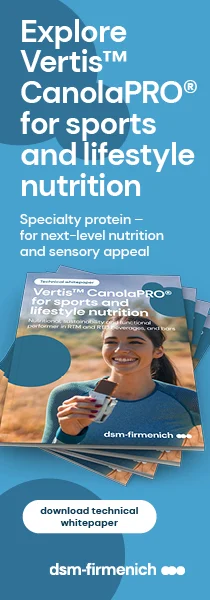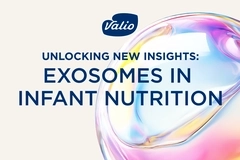Demystifying collagen: “We need to educate the market,” flags Bioiberica
12 May 2023 --- As the collagen market continues to thrive, so does the “noise” surrounding dosage, types and category applications.
NutritionInsight spoke with collagen suppliers Bioiberica and Biocell Technology at Vitafoods 2023, which took place in Geneva, Switzerland (May 9 to 11) on how they are bringing awareness to the industry and carving out a niche in a crowded market.
“Collagen has a very promising future. The category is booming. If you look around [at Vitafoods 2023], you see it everywhere. Now it’s our job as producers to educate the market, bring transparency and explain the science,” says Monica Gomez, branded ingredients marketing manager at Bioiberica.
Adriana Olivares Sainz, director of communications at Bioiberica, adds: “There is a lot of misunderstanding about collagen. We have more than 27 types of collagen in the human body, but most people don’t understand the difference between one type of collagen from another.”
Bringing industry together
With consumer interest in collagen products at an all-time high, Bioiberica organized its first Collagen Symposium, hosted on March 30 at the company’s headquarters in Barcelona, Spain.

 Bioiberica showcased its legacy Collavant n2 and Mobilee ingredients, as well as its newers Dermial and DAOgest solutions at Vitafoods 2023.The goal of the roundtable event was to gather experts and promote a unified understanding of the ingredient. Rheumatologists, experts in joint health, R&D experts, collagen companies and the president of the Collagen Stewardship Alliance, among others, joined in the discussion.
Bioiberica showcased its legacy Collavant n2 and Mobilee ingredients, as well as its newers Dermial and DAOgest solutions at Vitafoods 2023.The goal of the roundtable event was to gather experts and promote a unified understanding of the ingredient. Rheumatologists, experts in joint health, R&D experts, collagen companies and the president of the Collagen Stewardship Alliance, among others, joined in the discussion.
“One of the outcomes from this event was that vegan collagen doesn’t exist – it’s a myth,” says Gomez.
TCI Biotech was one company showcasing a vegan “collagen alternative” at Vitafoods. The beauty and wellness contract manufacturer partnered with Belgium-based VeCollal to bring nutraceuticals containing the ingredient to market. The collagen alternative is a biomimetic solution that comes in type I for skin and beauty and type II for joint and bone health.
It has an identical amino acid profile as type I human collagen and through an in-vitro experiment, it doubled collagen secretion.
Gomez, however, argues that collagen is obtained from animal sources only. “Sure, there are collagen boosters that are plant-derived, which can boost the body’s own production of collagen.”
“There are also some plants that may contain a group of amino acids that mimic the collagen profile – but they are not collagen,” she adds.
Pulling apart processing methods
To help further demystify the collagen, Bioiberica backed a scientific paper published in Nutrients, which accumulated evidence comparing hydrolyzed and native (undenatured) type II collagen in joint health – the first peer-reviewed study to do so.
“This review was led by our R&D department and it became the basis of our discussion at the symposium,” says Gomez.
“There is a lot of confusion in the market in terms of what is hydrolyzed collagen, what is native type II collagen, what are their different molecular structures, mechanisms of action and dosages,” she underscores.
Pulling apart processing methods
Olivares Sainz highlights that hydrolyzed collagen is mainly used for skin and beauty. It can also be used for joint health, but the dosage has to be much higher.
Meanwhile, native type II collagen outperforms in joint health applications.
 Douglas Jones, head of sales and marketing at Biocell Technology.“We have studies to show that for joint discomfort – consumers should take native type II collagen, such as our Collavant n2 ingredient. The dosage for this type is also much smaller, with only one pill at 40 mg,” says Olivares Sainz.
Douglas Jones, head of sales and marketing at Biocell Technology.“We have studies to show that for joint discomfort – consumers should take native type II collagen, such as our Collavant n2 ingredient. The dosage for this type is also much smaller, with only one pill at 40 mg,” says Olivares Sainz.
Echoing this sentiment, Douglas Jones, head of sales and marketing at Biocell Technology, says there is a need to educate about collagen on an ongoing basis, as there are always newcomers to the category.
Standing out from the crowd
Biocell technology runs under the tagline “not all collagens are alike.” Jones emphasizes this is “specifically the case with Biocell collagen,” which offers a high level of bioactivity.
“There are a multitude of collagens out there and you have to look at the bioactives. That is why there is such a variance in dosage.”
One of the things that distinguishes Biocell collagen is its low recommended dose for skin and joint health. The ingredient, sourced from chicken sternum cartilage, has been proven in studies to work at 500 mg per dose, whereas other types of collagen require 7 to 10 grams, says Jones.
“We’ve got intellectual property and patents on our extraction and manufacturing methods and so what we end up with is a bioactive comprised of hydrolyzed collagen type II peptides, hyaluronic acid and chondroitin sulfate.”
“Those constituents exist in this matrix naturally and we’ve been able to demonstrate efficacy on skin health through clinical trials. We can also measure which of these constituents are delivered into the bloodstream.”
Matrices matter
Bioiberica’s Mobilee ingredient also features a naturally occurring matrix of ingredients sourced from rooster combs. The ingredient contains a high concentration of hyaluronic acid (60-75%) and other components, including polysaccharides (>10%) and collagen (>5%).
The ingredient has been tested in eleven clinical and pre-clinical studies and has been shown to positively impact joint and muscle health at a low dosage of 80 mg per day.
Its most recent study, unveiled earlier this month at the world’s leading clinical conference for bone, joint and muscle health, WCO-IOF-ESCEO, revealed the ingredient’s new application for muscles.
 Symrise showcased a collagen coffee drink at Vitafoods 2023.“This latest evidence points towards its potential to play a supportive role in muscles too; where it may be effective for balancing muscle cell turnover and protecting against common characteristics of sarcopenia,” says Daniel Martinez-Puig, Head of R&D Human Health, Bioiberica.
Symrise showcased a collagen coffee drink at Vitafoods 2023.“This latest evidence points towards its potential to play a supportive role in muscles too; where it may be effective for balancing muscle cell turnover and protecting against common characteristics of sarcopenia,” says Daniel Martinez-Puig, Head of R&D Human Health, Bioiberica.
The results showed that Mobilee promoted myocyte hyperplasia (increase in myocyte size) by 7% and myocyte proliferation (production of new cells) by more than 20%. The ingredient also showed an effect against muscle atrophy, muscle damage and cell death in the sarcopenia model.
Future of the market
Looking ahead, Gomez anticipates the collagen market will continue to evolve toward more convenient and delicious formats like functional foods. She also says Bioiberica hopes to organize at least part two of The Collagen Symposium, following the positive feedback from its first.
On a consumer awareness level, Antonio Verdrell, marketing director and Bioiberica, notes that health professionals with an online following can play a key role in influencing the category.
Targeting consumer cravings for convenient formats, Symrise showcased a ready-to-mix collagen coffee drink containing chicken-sourced collagen and vitamin C – a collagen booster with an EFSA claim – from its Diana portfolio at Vitafoods.
By Missy Green, reporting from Vitafoods Europe 2023
















